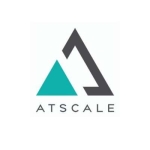What is our primary use case?
SAP BusinessObjects Business Intelligence Platform is currently deployed as on-premise solution and recently the server got hosted into cloud, but it's more or less assembled as on-premise solution.
How has it helped my organization?
It was a tool that was established in its current form a very long time back, so most of the uses are familiar. The familiarity is very good with that tool. Since it is familiar, they're able to navigate and get the reports and even share the requirements needed for anything new that needs to be developed. To an extent, they know its features and capabilities. So that's one thing.
It is providing a wide range of reports in different departments. Especially for the department I'm working in, they are mostly interested in the regulation side. So they are looking for the information or properties regarding the products and getting their details on the regulation, which will help them to manage or make sure that all the regulatory standards are maintained for the information captured in the database.
What is most valuable?
It is more user-friendly and easier to work with the report creation part, creating reports out of an established universe. Maybe a business person could liberate the existing universe and create a report on top of it, as well. So that's one cool feature.
It has additional capabilities like scheduling and getting the reports in the various forms, like through the mails and through the shared locations, and all those sorts of formats, so those features are good. The user friendliness helps create the reports out of the data source available.
What needs improvement?
It's not like apps. Most of the Apps right now are into dashboarding. This tool, for the Crystal Reports in the phase I'm primarily working on, does not have those dashboarding capabilities, like in the other advanced tools like Power BI or ClickView, and compared to them the dashboard generation is not that great.
But there are other products, like SAP Analytics Cloud, all of which actually provide this information under the Business Intelligence platform. But I have not used it much because my customer has not moved onto those platforms yet. That may be one thing that may need improvement - the dashboarding side. Also sometimes the performance is not that great when getting millions of records out of it. It'll take its own sweet time to get that report refreshed.
Feature-wise, it's a slightly old technology, so I don't expect anything getting updated much in it, rather just continuing with their current thing.
I'm right now using other dashboarding tools for the dashboarding requirements. As I mentioned, it's not that capable of providing the current dashboarding requirements. I was introduced first to this tool then later to others.
For how long have I used the solution?
I'm using SAP BusinessObjects Business Intelligence Platform in my current project. One of my roles is to develop the reports and universes, so I'm currently using it for that.
What do I think about the stability of the solution?
On the backside, there is not much that needs to get fixed. Occasionally we used to figure out some bugs with the versions, mostly compatibility issues with the latest databases, for example with Snowflakes. But we used to get the patches for that compatibility issues. But so far I haven't seen those sorts of issues in the environment that I'm working in.
In terms of the maintenance, we have seen some server slowness or shutdowns or something like that. We have noticed it, but not much on the admin side of activities. But if we see some issues in the system then we usually reach out to SAP to see their point of view and they may be coming with a fix for it or with a solution to adjust the system parameters.
What do I think about the scalability of the solution?
SAP BusinessObjects Business Intelligence Platform is not that scalable. I will say the scalability is medium. It's not as easy to scale it up as we need it to deploy. We have an option to cluster it with multiple servers, but it's not like it's just a configuration change. It should be repeating the process of the entire installation in a different box, and linking those up.
It is being widely used and we have people from various departments and roles. It is covering some of the finance reports and it covers from the financial side. On the VP level, they are getting some sales reports and other data, with daily refreshes on it. It is used by the analyst for day-to-day activities. It is widely used. I cannot pinpoint one specific use we set for it for the current client I'm working for.
Maybe I'm planning to increase usage. The BI platform has different components in it. The current components I'm using are mostly the Web Intelligence and the Crystal Reports. I feel like it's a little outdated, it's a little more like old technology. But under that they have an SAP Analytics Cloud platform that they're building up under the Business Intelligence itself. I guess eventually the roadmap will be inclined to that solution.
How are customer service and support?
We usually use both the forum and the support group for SAP. As I mentioned, if there are some serious issues, we are in contact with SAP, so we'll raise tech issues with them and they will come back with a fix, like connectivity to a new database. And if there are any ongoing issues that we identify in our landscape which need to be addressed, they usually get back with the fix or they usually analyze our system and give us suggestions.
We also interact with the forum. The blog forums and the social forums for this product are well established. We will get most, 60% to 70% of queries, addressed in those forums. I have observed most of the very similar issues already registered in those forum, which will be helpful for debugging or solving our issues.
Occasionally we may have to do multiple follow-ups for a product with tech support and get them to understand and then have a debate to get it fixed. That's little challenging. It'll take some time since maybe our issues are specific to a landscape, the way that we operate with this huge, massive amount of records. So at times they may not be easily open, but with more proof and if we can provide more justification, they usually pick it up. But it's not very fast, it will take some time.
How was the initial setup?
The deployment process is quite easy. We have a dedicated admin team to manage the queues of deployment. It is very easy to get that once we deploy the changes in dev, it can be easily moved across environments to different test environments and to the cloud. It also has the capability to roll back the changes if there are any issues that we identify, so I don't see any issues with the deployment process.
To set it up, provided we have all the infra support needed, it will mostly be handled by different teams, like database. From that perspective, maybe a couple of teams may be involved as repositories are mounted on top of database, but the installation side can be handled by one person. That can be possible if it is a small scale deployment with not too many clusters involved.
But if there are cluster servers and multiple servers needed to be deployed and linked, it may be worth having a considerable effort to deploy this solution. I'm mostly talking about the installation of the product. But it can be handled with a couple of people, provided we have the support from the infra team with the servers, with required specification for the server, as well as any other support needed, including admin support for the servers.
If it is standalone, a simple server installation can be completed in a day or two.
What was our ROI?
It is very widely used across different departments and it definitely serves a purpose to give insights on the data. It is surely giving the returns, but I may not be in a position to give the exact figures or how much it will be in connection with the purchase demand or purchase cost. But it is definitely a tool that is needed for the day-to-day tracking.
What's my experience with pricing, setup cost, and licensing?
I think the licensing depends upon the user base. If it is a limited license, the user base has some restrictions. If we need to expand our user base, I guess there needs to be enhanced licensing. At a high level I can share that, but we haven't faced it as we have the full premium license with them, but I know the starter packages are limited on the number of users. Maybe not for all licensing, but only the lowest range licensing fee may have some limitation on the number of concurrent users.
What other advice do I have?
My advice to anyone considering SAP BusinessObjects Business Intelligence Platform is to keep an eye on the requirement side that they need. If you are looking for a flashy dashboard with a lot of user interactions with click and dicing the graphs, I don't recommend the Business Intelligence component or the Crystal Reports. They may have to look into other products.
On a scale of one to then, I would say SAP BusinessObjects Business Intelligence Platform is a 7.
Which deployment model are you using for this solution?
On-premises
Disclosure: My company has a business relationship with this vendor other than being a customer: Partner





















